You have a small catheter (tube) located near your nerve. Local anesthetic, or numbing medicine, will be delivered by an OnQ pump through this catheter.
The pump is set on a rate that can be adjusted. Nerve blocks are designed to minimize pain after surgery, not eliminate it completely.
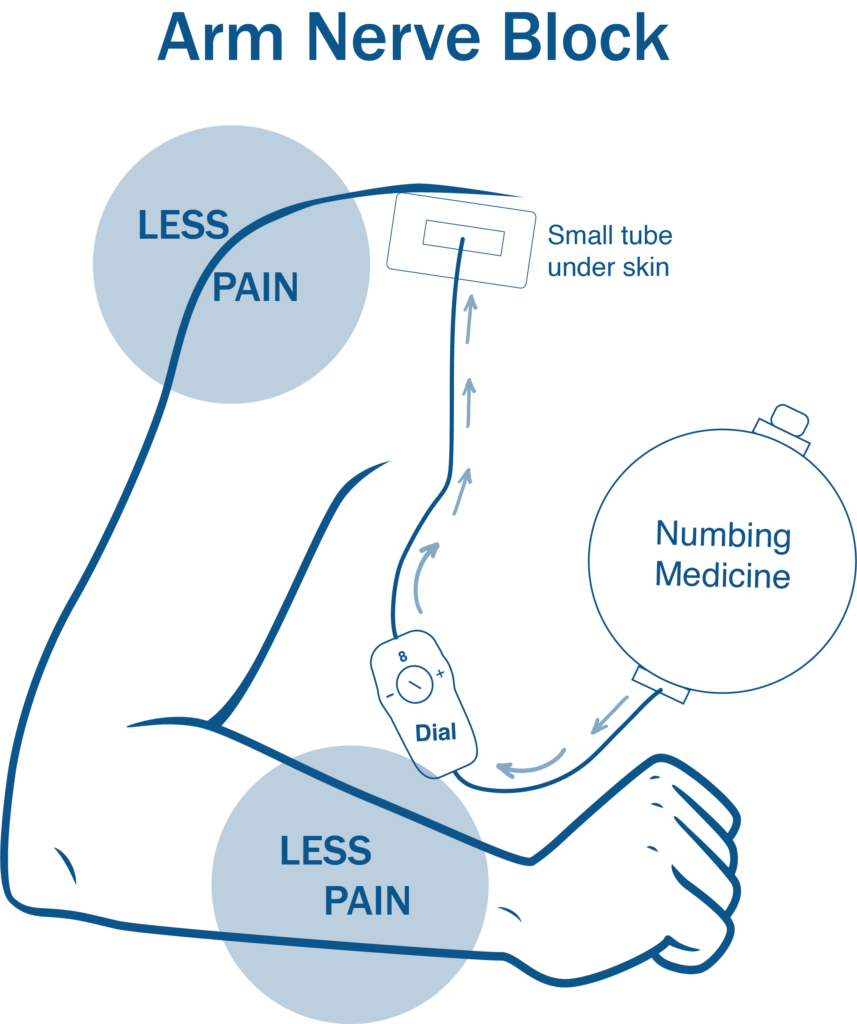
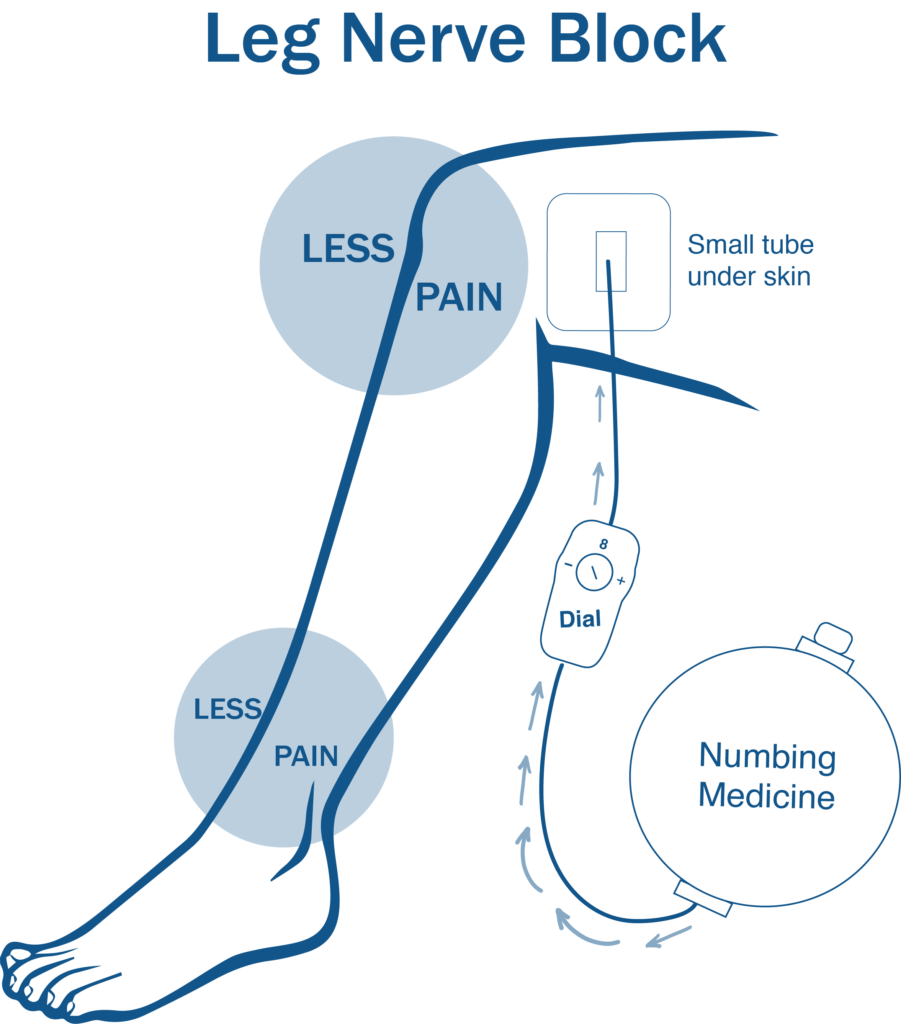

Pain expectations after surgery
- Some amount of pain is to be expected.
- Take a dose of pain medication before going to sleep.
- The nerve block may not cover the entire surgical site.
- Your extremity will be numb and/or weak for the next 2-3 days.
- Pad and protect your numb extremity.
- The infusion pump will last for 2-3 days. See below for more pump info.

Start your pain medication today
You were initially given a more concentrated numbing medication day of surgery. This dense block wears off between 8 and 24 hours. Start you oral pain medication before the strong nerve block wears off.
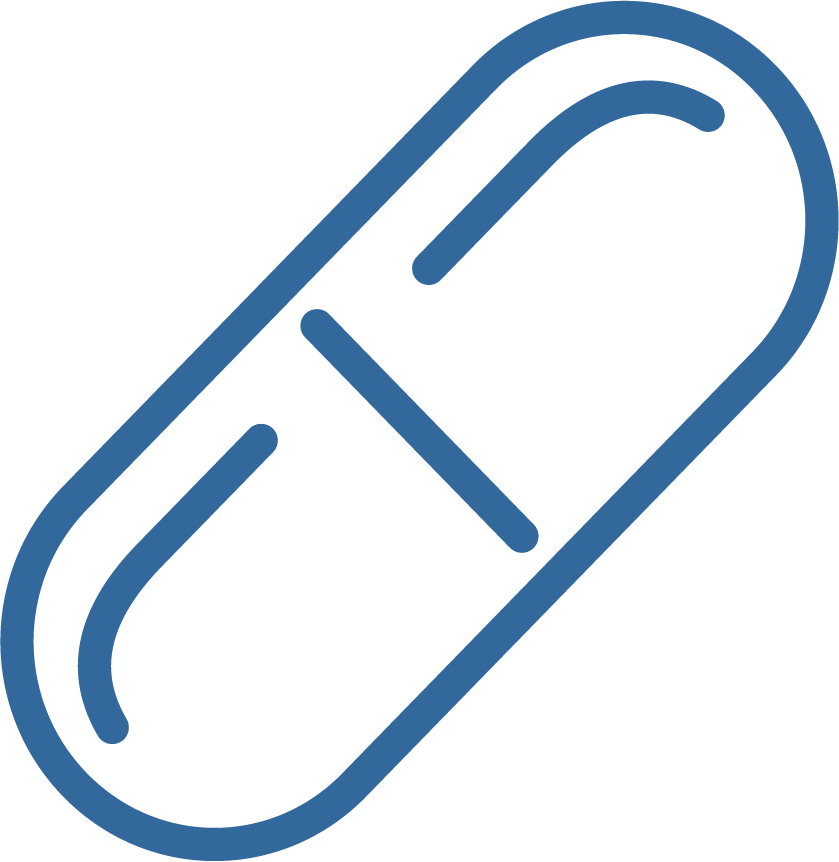
Pain medication instructions
Nerve Block Infusion Pump (On-Q)
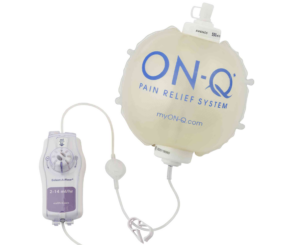
After 24 hours, you can increase or decrease the rate of the On-Q pump to make the block less or more dense.
On the second day, if your pain is well controlled, you may want to begin weaning the infusion rate down.
Weaning the rate down will prepare you for the discontinuation of the infusion.
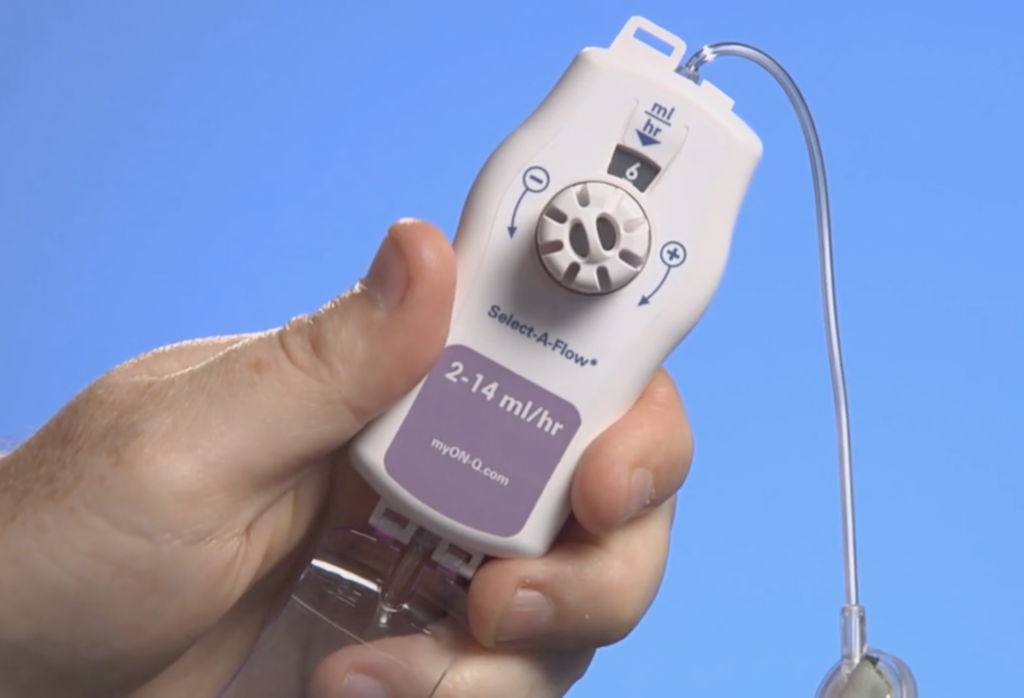
The infusion pump will last 2-3 days. The ball of fluid will shrink in size.
The size of the pump may appear to be the same size in the first 24 hours. This is normal. The infusion rate is very slow.




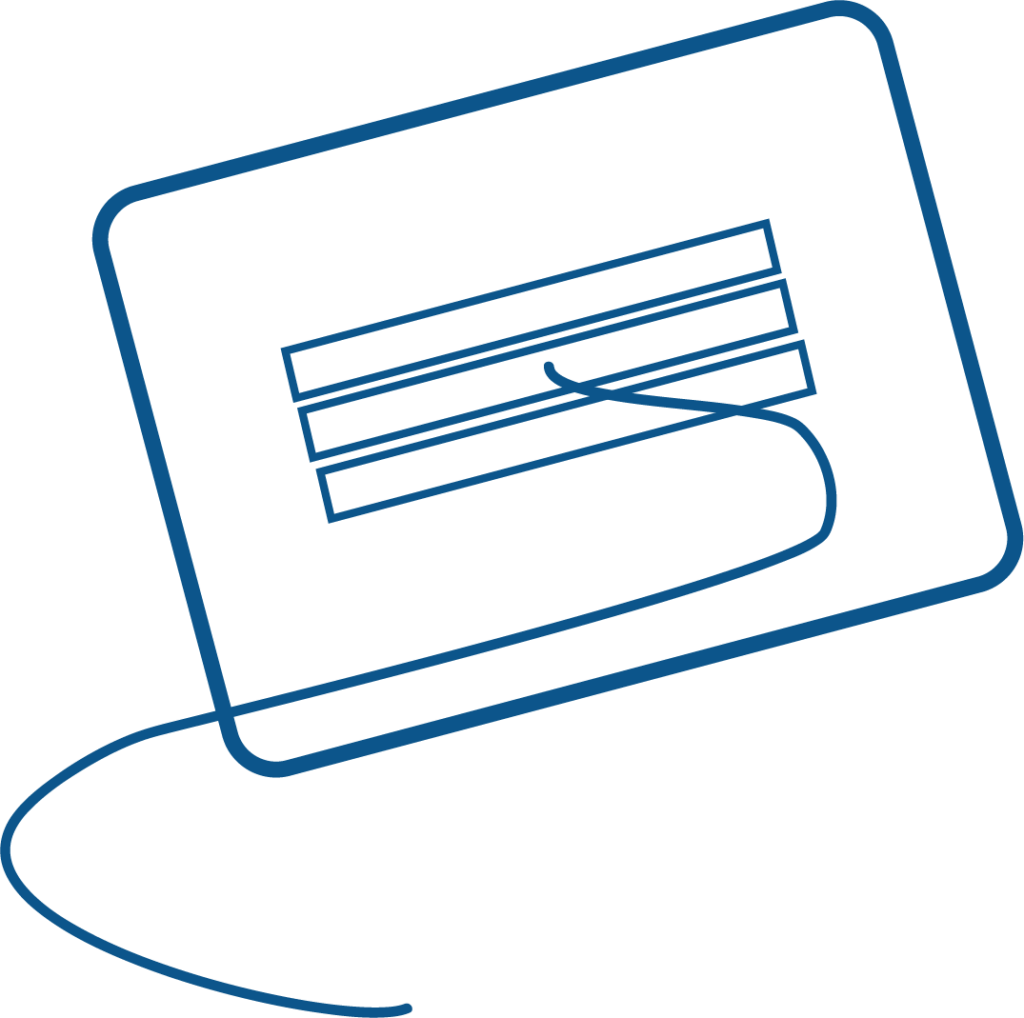
Caring for the nerve catheter
Arm nerve block side effects
Leg nerve block side effects
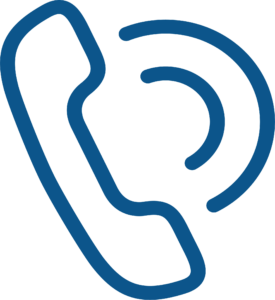
When to call the anesthesiologist
How to remove the nerve catheter
- Wash hands.
- Peel off the clear tape and dressing.
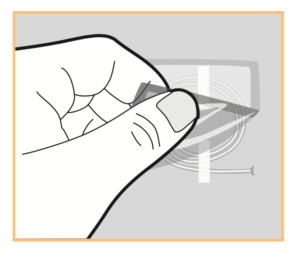
- Gently pull the catheter out from the skin. There may be some surgical glue at insertion site.
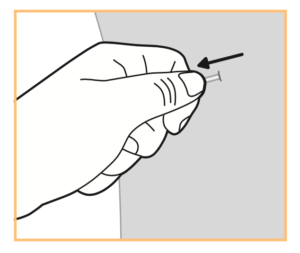
- When the catheter is completely out, there will be a blue or black tip at end of tubing.

- Discard pump and tubing into trash.
- You may see a small amount of clear fluid once removed. No band aid or gauze is necessary.
Troubleshooting
How to reinsert the catheter (thin tube) into the yellow port.
- Wash your hands.
- Find the yellow port.
- Remove any remaining tape.
- Anchor a finger under the side of the yellow port.
- Snap open the clear top by applying pressure to the yellow end.
- Set aside.
- Clean off the thin nerve catheter tubing.
- Reinsert the thin tubing until you feel resistance.
- Close the clear top.
- Once reconnected, restart the infusion. Please check that the line is unclamped.
Questions? Contact the anesthesiologist:
Anesthesia billing questions? click here

